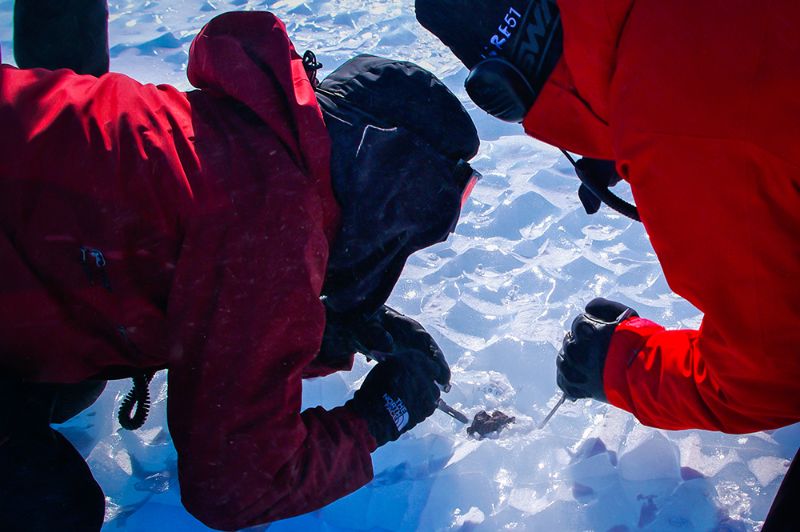Climate change is causing meteorites to disappear
The Antarctic holds a valuable treasure of around 300,000 meteorites lying on the surface of the ice. But many of them could soon disappear. A new study shows that for every tenth of a degree rise in global air temperature, between 5,000 and 12,000 meteorites are lost from the surface of the ice sheet ? they sink. By 2050, about a quarter of the meteorites will no longer be found on the surface. In a high warming scenario, this could rise to three quarters by 2100.
With the loss of meteorites, a great deal of knowledge will be lost, as they are unique extraterrestrial objects. «They provide information about the origin of life on Earth or the formation of the Moon and other celestial bodies,» says glaciologist Daniel Farinotti of the Swiss Federal Institute for Forest, Snow and Landscape Research WSL and ETH Zurich, who was involved in the study.
Fighting against time
For this reason, co-leader of the study and glaciologist Harry Zekollari from WSL and ETH Zurich recommends that the collection of Antarctic meteorites should be accelerated. «Currently, five times more meteorites are disappearing from the Antarctic surface than can be collected,» says Zekollari. «To preserve this valuable extraterrestrial material, we need to intensify and coordinate the collection of Antarctic meteorites before we lose them to climate change.» This is similar to what is already happening in collecting ice cores from shrinking glaciers or sampling coral reefs before they bleach. But even more important is the rapid reduction of greenhouse gas emissions to reduce global warming and thus preserve most of the Antarctic meteorites on the surface in the long term.
Dark meteorites warm up strongly
The sinking of the meteorites is partly due to their dark colour. «Even at temperatures well below freezing, the dark meteorites heat up so much in the sun that they can melt the ice directly beneath the meteorite. In this process, the warm meteorite creates a cavity in the ice and disappears completely below the surface over time,» says Veronica Tollenaar, co-leader of the study from the Université libre de Bruxelles. As the temperature of the atmosphere rises, the surface temperature of the ice also increases, which accelerates this process because less heat from the meteorites is needed to melt the ice locally.
The researchers used artificial intelligence to calculate the expected losses. The study has been published in the prestigious journal Nature.
